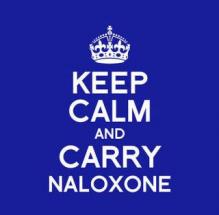States Expand Access to Overdose-Reversal Drug

Addiction Law, History and Public Policy Articles
Harm Reduction
911 Good Samaritan Law
Naloxone
Overdose Prevention
Overview
Originally Published: 08/28/2014
Post Date: 08/29/2014
Source Publication: Click here
Similar Articles: See the similar article
Summary/Abstract
Faced with an unrelenting epidemic of heroin and pain-pill deaths, many states are pushing to make more widely available a drug called naloxone that can reverse overdoses from such opioid drugs within minutes.
Content
In North Carolina, Louise Vincent, an outreach worker in Greensboro, has rescued scores of opioid addicts from the brink of death by giving them naloxone.
Now, she is delivering the drug to those she says are in the best position to help overdose victims—their friends and family members—under a North Carolina law passed last year that expanded access to naloxone.
"It could be the difference between life and death," said Ms. Vincent, a contract worker for the North Carolina Harm Reduction Coalition, a not-for-profit organization that has dispensed about 3,000 naloxone kits statewide since the law took effect.
The program so far has resulted in 125 overdose reversals, said Executive Director Robert Childs. Deaths from heroin and pain medications totaled 712 in North Carolina in 2012, according to the state's Department of Health and Human Services.
Nationwide, overdose deaths from painkillers such as oxycodone rose 23% to 16,917 between 2006 and 2011, according to the Centers for Disease Control and Prevention. Those due to heroin, which is related to the opioid drugs, jumped 110% to 4,397 over the same period.
There are now 24 states, along with the District of Columbia, that have passed laws expanding access to naloxone, 17 of them in the last two years, said Corey Davis, deputy director of the Network for Public Health Law's Southeastern region, who tracks such policies. The measures vary, but common provisions include allowing doctors to prescribe naloxone to a drug user's friends and family members, and removing legal liability for prescribers and those who administer the medication.
Meanwhile, 17 states and the District of Columbia have passed "good Samaritan" laws that provide limited legal immunity—from drug charges, for instance—to people who call for emergency help for an overdose, Mr. Davis said.
The moves are prompted in part by concerns that those present during an overdose often are reluctant to call 911 because they fear legal repercussions or may themselves be using drugs, said Traci Green, a professor of emergency medicine at Brown University who is an expert on overdose prevention.
The naloxone legislation has drawn support from a broad political spectrum. While liberal-leaning states like Massachusetts and Washington have led the way, a naloxone bill sailed through the conservative Utah legislature this year. A measure in Alabama is being promoted by a Republican lawmaker who is a police captain.
Still, the proposals have met some opposition, including from those who argue that making naloxone more accessible effectively condones opioid abuse, like providing clean needles to heroin users to protect them from HIV and hepatitis C.
Republican Gov. Paul LePage of Maine vetoed a naloxone bill last year, saying it would provide "a false sense of security that abusers are somehow safe from overdose." But this year, after working with lawmakers on a new naloxone bill, he allowed it to become law without his signature.
Naloxone was developed in the 1960s to counter overdoses of heroin and other opioids. It works by displacing the drugs from their receptors in the brain.
Considered safe and effective by medical experts, it has been stocked by emergency rooms and doctors' offices for decades. It is now sold as a generic by pharmaceutical companies including Hospira Inc. and Mylan Inc. and can be administered by injection or nasal spray.
Naloxone, which requires a prescription, costs about $4 a dose for an injectable version and roughly $45 for a nasal-spray form, said Dan Bigg, director of the Chicago Recovery Alliance.
Although legislation has paved the way for greater access to naloxone, distributing it remains a challenge.
Twenty-six states have at least one police department equipping personnel with naloxone, according to Mr. Davis. Another way to make it available is through overdose-prevention organizations like the Harm Reduction Coalition, which has offices in New York and California and has dispensed thousands of naloxone kits at needle-exchange sites and other locations.
Yet another option gaining traction is to make it easier for people to get naloxone from pharmacies.
In Rhode Island, a so-called collaborative practice agreement among various parties, including the state Board of Pharmacy and Walgreen Co. made it possible for anyone to request the drug at any of the pharmacy chain's locations in the state. As part of the arrangement, a prescription written by a doctor at a local hospital applies essentially to everyone.
Under a pact announced last week, CVS Caremark Corp. said it would offer naloxone without a prescription at all 63 of its Rhode Island pharmacies.
Health officials in Kitsap County, Wash., just west of Seattle, have reached a similar agreement with Albertsons supermarket pharmacies that is slated to take effect soon. And in New Mexico, the state Board of Pharmacy this year added naloxone to a list of drugs that pharmacists may prescribe.
So far, only 10 pharmacies in the state regularly stock naloxone, said Michael Landen, state epidemiologist at the New Mexico Department of Health. But, he said, the program "has great potential."





